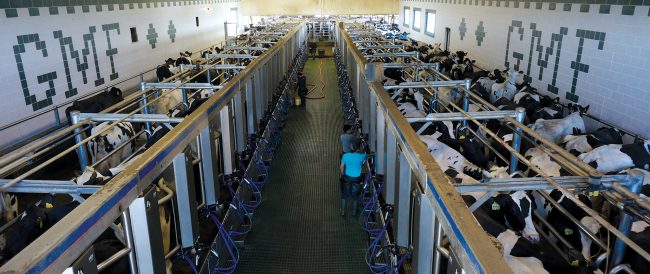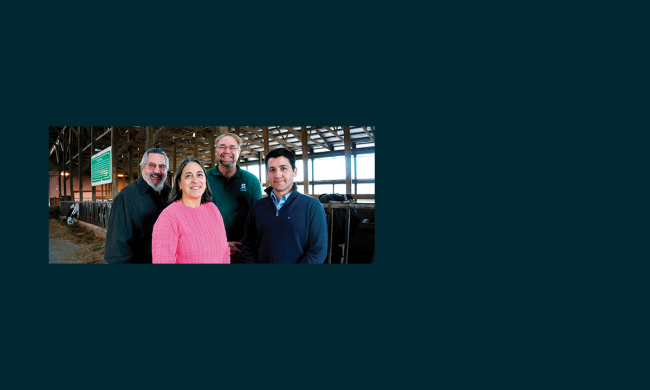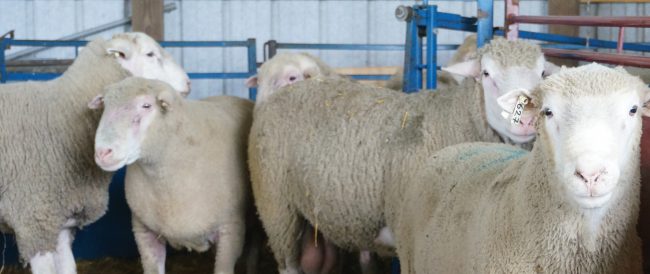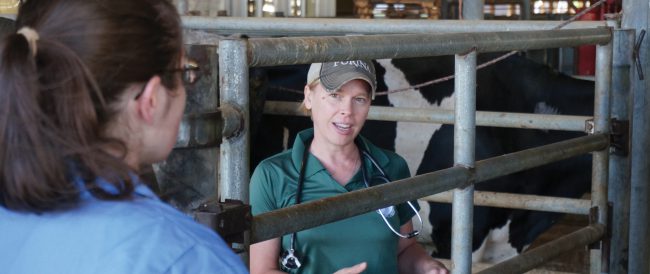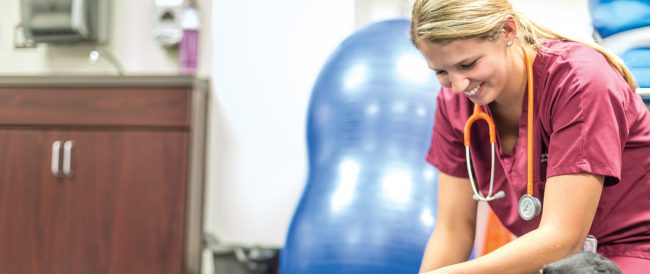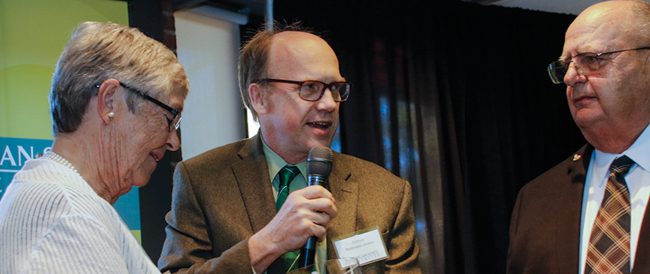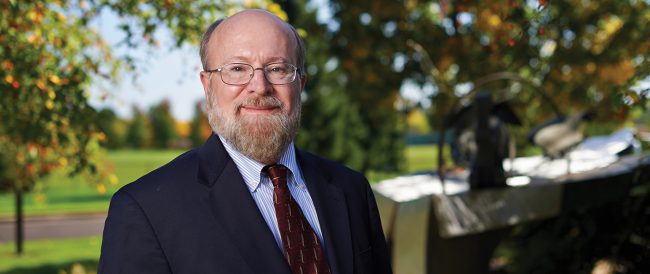 Read More
Read More
2019 research update
Dr. Rob Abramovitch and his lab have built a new screening platform, which uses a collection of resistant mutants to identify small molecule inhibitors of tuberculosis. This fast and accurate screening identified ten new inhibitors of MmpL3, a flippase that tuberculosis needs in order to replicate. MmpL3 inhibitors are an important new class of TB drugs; one is currently in clinical trials.
“Tuberculosis has a cell envelope made of lipids, sugars, and proteins,” says Abramovitch. “The compounds made in that envelope are required for TB to replicate. MmpL3 is what moves one of those glycolipids from inside to outside the cell. By inhibiting MmpL3, we can block replication and kill M. tuberculosis.”
On the fifth floor of MSU’s Biomedical and Physical Sciences building, Dr. Robert Abramovitch sits in his office. Sunlight streams through the window behind him as he leans back in his chair.
“Let me start at the beginning,” he says. Abramovitch, an assistant professor for the Department of Microbiology and Molecular Genetics, which is an affiliated department with the College of Veterinary Medicine, launches into a detailed narrative about Mycobacterium tuberculosis (Mtb).
“In 2015, tuberculosis (TB) was reported to have overtaken HIV as the leading cause of death by an infectious disease in humans,” he says. “Nearly 2 million [1.8 million] people die from it every year. The problem with the current antibiotic treatments is that they work slowly. If the TB isn’t drug resistant, it can take six months with harsh side effects like nausea and liver toxicity.
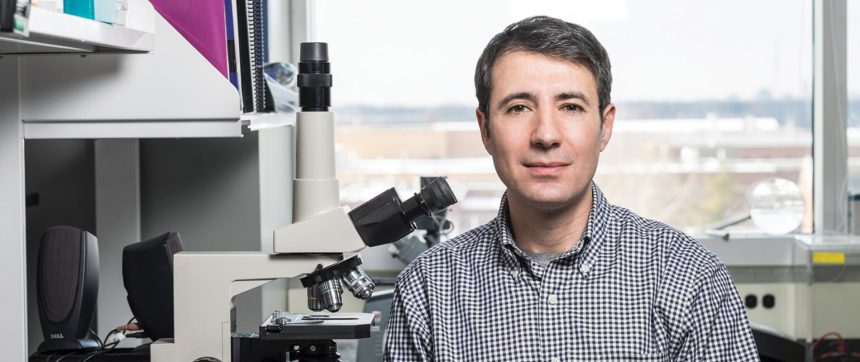
Many sick individuals don’t complete their full therapy, and some countries don’t have access to therapy options at all. This means the disease is not fully treated, which is how drug-resistant TB develops.
“If TB is drug resistant, it can take more than two years to treat with worse side effects—psychosis, permanent hearing loss,” says Abramovitch. “It has a 40 percent mortality rate, and that’s with treatment.”
Abramovitch’s research focuses on treating TB in a different, faster way. His goal is to reduce drug-resistant TB while creating more tolerable therapies. One obstacle to treatment is overcoming dormancy. When Mtb is dormant, it’s difficult to diagnose or treat, and can lead to drug resistance.
Enter artemisinin, an herbal medicine that the Chinese have used for centuries to treat malaria. Abramovitch discovered that artemisinin can block Mtb dormancy by stopping its sensors from registering low oxygen levels.
“Mtb goes dormant when it senses a lack of oxygen, so we’re disabling that sensor,” says Abramovitch. “It’s like dandelions. Instead of mowing over Mtb with an antibiotic, we’re trying to dig it up at the root.”
mTB’s close cousin, M. bovis, causes bovine tuberculosis (bTB). According to the Animal and Plant Health Inspection Service at the US Department of Agriculture, bTB has been nearly eliminated from America’s livestock population. However, sporadic outbreaks continue to plague producers with expensive quarantines and culling (the National Agriculture Statistics Service of the USDA’s Agricultural Statistics Board reported that for 2015, beef and dairy cattle production brought in cash receipts of nearly $80 billion).
The management of the wild deer herd is a major cause of bTB outbreaks. In the past, cows passed the disease into the environment, making it endemic in deer. Now, free-roaming deer can pass the disease back to beef and dairy cattle herds and further contaminate the environment, posing a health risk to consumers and hunters, as well as the threat of economic loss to producers.
“M. bovis also can establish dormancy,” says Abramovitch. “It can live in the environment and transmit to deer through their diet. Perhaps it also can survive in silage and transmit to cows that way.”
Abramovitch is working with Drs. Steve Bolin, associate director of the MSU Veterinary Diagnostic Laboratory (VDL), Rinosh Mani, section chief of the Bacteriology Laboratory at the VDL, and Dan Grooms, chair for the Department of Large Animal Clinical Sciences, to use the same biosensors in human TB to study M. bovis survival in animal feed.
“With the grant we received from the Michigan Alliance for Animal Agriculture, we’re working to develop new methods to assess survival of M. bovis in feed,” says Abramovitch. “It’s difficult to measure the entire impact our research could have,” says Abramovitch. “But the potential for saving lives—both human and animal—is very real.”
Impact
Students and learning: Abramovitch’s lab has hosted many students: PhD candidates, DVM students, undergraduates, and summer research participants. “We promote diversity by giving students from other universities the opportunity to get research experience; the same is true of our DVM students. Working with students, no matter their goals or which program they’re with, fulfills our lab’s mission to train,” says Abramovitch.
Community and outreach: Nearly two million people die from TB each year; it is reportedly the leading cause of death among humans due to infectious disease. “New methods of treating tuberculosis are vital, especially when we consider antibiotic resistance,” says Abramovitch.
Faculty interaction: Abramovitch’s lab collaborates with many faculty, both inside and outside of the veterinary college. The lab has partnered with units like the Departments of Large Animal Clinical Sciences, Pathobiology and Diagnostic Investigation, Chemistry, and Pharmacology and Toxicology in pursuit of solutions to problems like bovine tuberculosis, avian influenza, and food safety. “MSU is friendly and open, and people take the time to communicate,” says Abramovitch. “It’s a great place to work together.”



